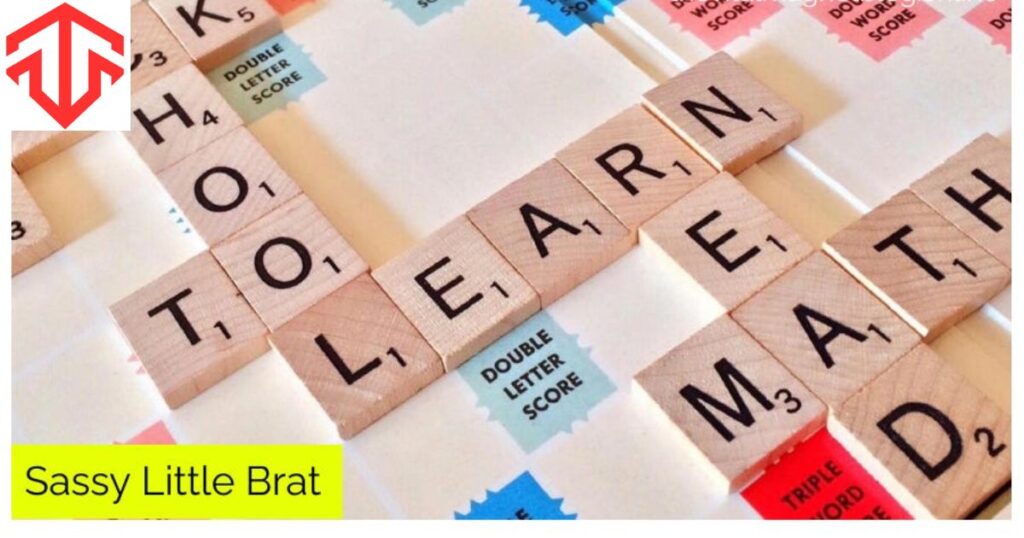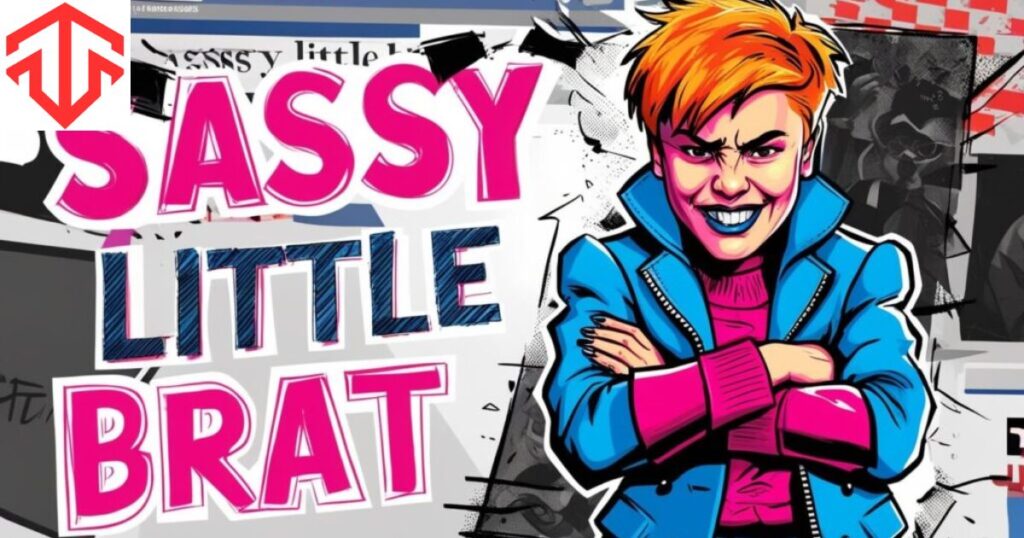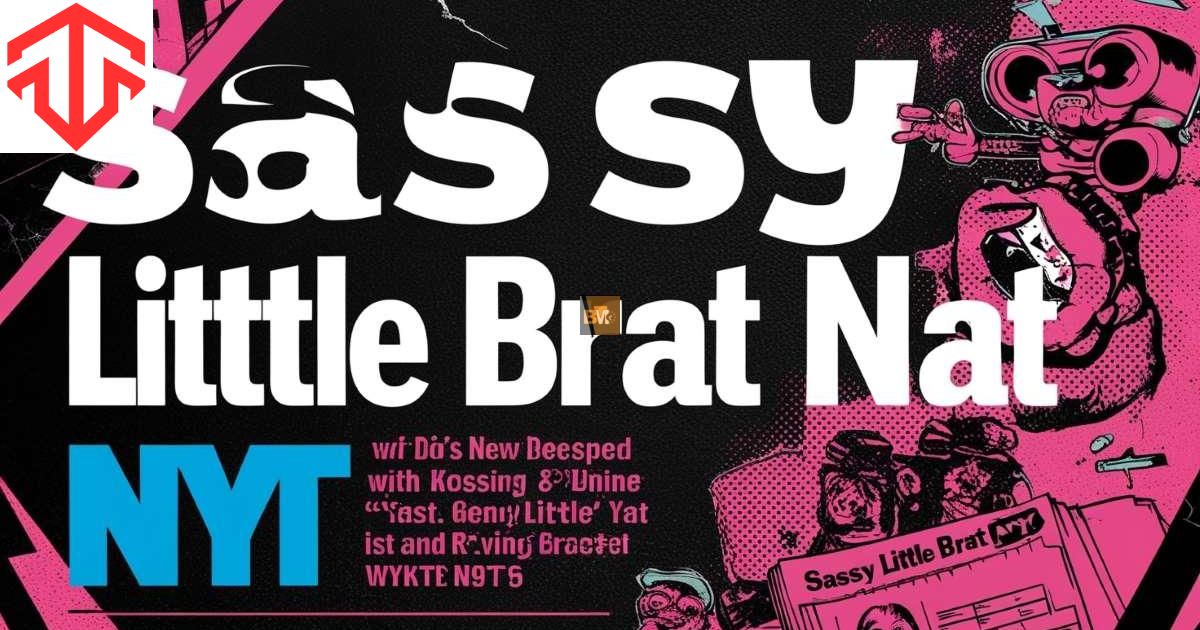In recent times, the phrase “sassy little brat” has caught the attention of readers and social media users, particularly in connection with its usage in The New York Times (NYT). This seemingly innocuous combination of words has sparked conversations about child behavior, parenting styles, and the evolving nature of language in media.
The NYT, known for its influential reporting and cultural commentary, has become an unexpected focal point for discussions surrounding this phrase. The emergence of “sassy little brat” in NYT articles reflects a broader trend in how modern society perceives and describes bold, confident behavior, especially in children.
What Does “Sassy Little Brat” Mean?
The term “sassy little brat” is composed of three distinct words, each contributing to its overall meaning:
- Sassy: This adjective describes someone, typically a young person, who is bold, spirited, and prone to cheeky or impertinent behavior. It often carries a connotation of confidence and quick-wittedness.
- Little: In this context, “little” usually refers to the age or size of the person being described, implying that they are young or small.
- Brat: This noun traditionally describes a child who is ill-behaved, spoiled, or irritating. It often carries a negative connotation, suggesting a lack of discipline or respect for authority.
Connotations and Usage
When combined, these words create a phrase that can be interpreted in various ways, depending on the context and the speaker’s tone. “Sassy little brat” can be used:
- Affectionately, to describe a child who is spirited and clever, albeit sometimes challenging
- Critically, to point out behavior that crosses the line from confident to disrespectful
- Humorously, to characterize someone (often oneself) who enjoys being playfully rebellious
The phrase’s popularity stems from its ability to encapsulate a complex set of behaviors and attitudes in a concise, memorable way.
The Use of “Sassy Little Brat” In NYT Articles

The New York Times (NYT) has employed the phrase “sassy little brat” in various contexts within its reporting and commentary. While I don’t have access to specific recent articles, the phrase is typically used in the following ways:
- Cultural Commentary: NYT writers may use the phrase when discussing broader societal trends, particularly in articles about changing attitudes towards child behavior or parenting styles.
- Book and Film Reviews: Critics might use “sassy little brat” to succinctly describe characters in literature, movies, or TV shows, especially when reviewing content aimed at younger audiences.
- Parenting and Education Pieces: Articles focusing on child-rearing or educational approaches might reference the phrase when discussing the challenges of fostering confidence in children without encouraging disrespect.
- Social Media and Language Trends: As the phrase gained popularity online, NYT articles exploring internet culture and language evolution may have analyzed its spread and impact.
- Opinion Pieces: Columnists or guest writers might use the term when sharing personal anecdotes or observations about modern childhood and family dynamics.
The use of this phrase in NYT articles often reflects its cultural relevance and can spark discussions about its implications for how society views assertiveness in children, particularly in relation to gender expectations and evolving parenting norms.
Read This Blog: Everything You Need to Know About Blackboarduct: Features, Benefits, and More
Cultural Impact of the Phrase “Sassy Little Brat”
The proliferation of “sassy little brat” in media and everyday conversation has had several notable impacts on popular culture:
Shifting Perceptions of Child Behavior
The phrase has contributed to ongoing debates about what constitutes acceptable behavior in children. It has prompted discussions about the balance between encouraging confidence and assertiveness while maintaining respect and discipline.
Influence on Parenting Styles
Parents and caregivers have had to grapple with how to respond to “sassy” behavior, leading to new approaches in child-rearing that aim to nurture a child’s spirit without condoning rudeness.
Media Representation
The popularity of the “sassy little brat” archetype has influenced how children are portrayed in books, movies, and TV shows. Characters embodying this trait have become more prevalent, often serving as fan favorites or central protagonists.
Language Evolution
The phrase exemplifies how language adapts to reflect changing societal values. The positive spin sometimes put on “sassy” behavior indicates a shift in how certain personality traits are perceived and valued.
NYT’s Take On Modern Parenting And Child Behavior
The New York Times has consistently provided a platform for examining contemporary parenting challenges, including those related to managing “sassy” behavior in children. Several key themes have emerged in their coverage:
Balancing Act
NYT articles often emphasize the delicate balance parents must strike between fostering independence and enforcing boundaries. Experts quoted in these pieces frequently advise on how to encourage a child’s spirit without allowing disrespect to flourish.
Cultural Differences
The newspaper has explored how different cultures perceive and handle assertive behavior in children, highlighting the cultural relativity of terms like “sassy” and “brat.”
Gender Dynamics
Many NYT pieces have delved into how gender expectations influence the perception of sassy behavior, noting that girls are more likely to be labeled as “sassy little brats” than boys exhibiting similar conduct.
Expert Opinions
The NYT regularly features child psychologists, educators, and parenting experts who offer insights into the developmental aspects of sassy behavior and strategies for positive reinforcement.
Pop Culture And The “Sassy Little Brat” Persona

The “sassy little brat” archetype has become a staple in various forms of media, reflecting and shaping public perceptions:
Television and Film
Characters fitting the “sassy little brat” mold have become increasingly popular in family sitcoms and children’s movies. These characters often serve as comic relief or drive plot developments through their audacious actions.
Literature
In children’s and young adult literature, sassy protagonists have gained prominence, appealing to readers who admire their boldness and wit.
Social Media Influence
The phrase has found a home on platforms like TikTok and Instagram, where users embrace and celebrate “sassy” behavior through memes, videos, and hashtags.
Marketing and Advertising
Some brands have capitalized on the appeal of the “sassy little brat” persona in their marketing campaigns, using it to convey a sense of confidence and individuality.
Read This Blog: Paul Inouye Wife: Insights into Her Life and Their Relationship
Public Reactions: How Readers Respond To “Sassy Little Brat”
The phrase “sassy little brat” often elicits mixed responses from readers and the general public:
- Humor and Relatability: Many find the phrase amusing and relatable, especially parents who see their own children’s behavior reflected in it.
- Generational Divide: Younger generations tend to view the phrase more positively, sometimes even embracing it, while older generations may see it as disrespectful.
- Criticism: Some readers criticize the term, arguing it normalizes or even glorifies disrespectful behavior in children.
- Cultural Debates: The phrase has sparked discussions about cultural differences in child-rearing and expectations of children’s behavior.
- Gender Discussions: Readers often point out the gendered nature of the phrase, noting it’s more commonly applied to girls than boys.
- Parenting Reflections: It prompts many to reflect on their own parenting styles and how they balance encouraging confidence with teaching respect.
- Media Influence: Discussions often touch on how media portrayal of “sassy” characters influences public perception of such behavior.
Overall, the phrase serves as a catalyst for broader conversations about child behavior, parenting, and changing societal norms.
The Evolution Of Attitude-Driven Phrases In Modern Language
“Sassy little brat” is part of a larger trend in linguistic evolution, particularly in terms of attitude-driven language:
Reclaiming Negative Terms
Similar to words like “geek” or “nerd,” “sassy” has undergone a transformation from a primarily negative descriptor to one that can be worn as a badge of pride.
Internet’s Role
The rapid spread of phrases like “sassy little brat” demonstrates the internet’s power in shaping and disseminating new linguistic trends.
Generational Language Gaps
The varying reactions to such phrases highlight the growing language divide between generations, with younger people more likely to adopt and positively use terms that older generations might find offensive.
Media Influence
The use of such phrases in respected publications like the NYT can lend legitimacy to colloquial language, accelerating its adoption in mainstream discourse.
How “Sassy Little Brat” Relates To Gender And Stereotyping?

The phrase “sassy little brat” intersects with important discussions about gender roles and stereotyping:
Gendered Language
Critics point out that “sassy” is more often applied to girls than boys, reflecting and potentially reinforcing gender stereotypes about assertive behavior.
Double Standards
The different reactions to assertive behavior in boys versus girls highlight ongoing issues of gender bias in child-rearing and education.
Empowerment vs. Criticism
While some view the “sassy little brat” label as empowering for young girls, others argue it’s a backhanded compliment that ultimately undermines their authority.
Media Representation
The prevalence of “sassy” female characters in media has both positive and negative implications for how girls see themselves represented in popular culture.
Frequently Asked Questions
What exactly does “sassy little brat” mean?
The phrase describes a child who is bold, confident, and sometimes cheeky or mischievous, often in a way that’s both endearing and potentially challenging.
Is “sassy little brat” a positive or negative term?
It can be both, depending on context. Some use it affectionately to describe spirited children, while others view it as a criticism of disrespectful behavior.
Why has this phrase gained attention in NYT?
Its usage in NYT articles reflects broader cultural discussions about child behavior, parenting, and changing societal attitudes towards assertiveness in young people.
Does the phrase “sassy little brat” reinforce gender stereotypes?
Yes, it’s often applied more to girls than boys, which can reinforce stereotypes about gender-appropriate behavior and assertiveness.
How has social media influenced the popularity of this phrase?
Social media platforms have amplified the use of “sassy little brat” through memes, videos, and hashtags, contributing to its widespread adoption in popular culture.
Conclusion
The phrase “sassy little brat” and its prominence in NYT articles and broader cultural discourse reflect the complex interplay between language, media, and societal values. As a descriptor, it encapsulates changing attitudes towards child behavior, parenting styles, and gender roles.
The ongoing debates surrounding this phrase highlight important discussions about how we perceive and nurture confidence in children while teaching respect and appropriate behavior. As society continues to evolve, so too will the language we use to describe personality traits and behaviors.

Fatima is an experienced content writer and digital marketer, skilled in creating SEO-friendly content that resonates with audiences. She helps brands enhance their online presence through targeted campaigns, with expertise in blog writing, social media management, email marketing, and SEO optimization.





